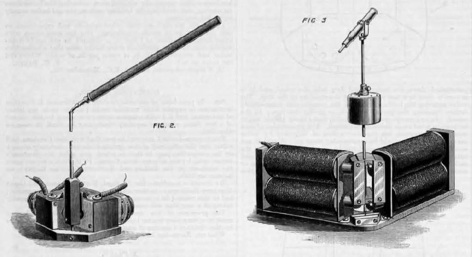An early forerunner of email — or perhaps that emblematically defunct piece of office equipment, the fax machine — the ‘writing telegraph’ was invented as a response to a perceived problem with telephones: the lack of a written record of a conversation. The device worked by encoding the movement of a stylus at the trasmitting station into electrical pulses and sending these pulses via the telegraph cable to the receiving station, where an arrangement of magnets forces a similar stylus to perform the same movements. Both styluses were in fact pens, writing onto a paper tape which moved underneath them at a steady speed — so a written message at one end would be reproduced perfectly at the other.

The inner workings of this device were in fact rather ingenious. The transmitter pen’s movements were transmitted via mechanical linkages (via a float sitting in a cup of viscous glycerine, to damp out any jerkiness of the user’s hands) to two series of thin carbon discs set at right-angles to each other and housed in a hard rubber, and placed ‘in circuit’ with the telegraph wire itself. Moving the stylus caused ‘pressure points’ to press on the series of discs, which reduced the electrical resistance in the circuit by an amount proportional to how far the stylus had been moved.
At the other end, the receiver contained a pair of electromagnets placed in a similar configuration to the stacks of carbon discs. ‘When the stylus of the transmitter is pulled to the right its pressure point presses on the left and right carbon discs, the resistance in the circuits is reduced and an increased current is sent into the corresponding magnets of the receiver, which pulls the receiving rod to the right in accordance with the strength of the current,’ The Engineer’s correspondent explained. If the movement of the receiving stylus is curved, then the up-down and left-right components of the movement are automatically picked up by the perpendicular carbon disc stacks and transmitted, resulting in a similar curved movement of the receiving rod.

An example of the system was attracting much attention at the American Institute Electrical Exhibition of 1887, the report says, and plans were being put in place to install writing telegraphs at sports stadiums and stock exchanges, to send instantaeous reports of baseball scores and price movements wherever they were needed.





Glasgow trial explores AR cues for autonomous road safety
They've ploughed into a few vulnerable road users in the past. Making that less likely will make it spectacularly easy to stop the traffic for...